Lecture 30: Sorting Networks
COSC 273: Parallel and Distributed Computing
Spring 2023
Annoucements
Submission links today:
- Final Project Leaderboard Submissions
- Choose Your Own Adventure Baselines
Today
Sorting small arrays quickly
Insertion Sort, Revisited
for (int i = 1; i < data.length; ++i) {
for (int j = i; j > 0; --j) {
if (data[j-1] > data[j]) {
swap(data, j-1, j)
}
}
}
Appealing Features of Insertion Sort
for (int i = 1; i < data.length; ++i) {
for (int j = i; j > 0; --j) {
if (data[j-1] > data[j]) {
swap(data, j-1, j)
}
}
}
- Only modifications are (adjacent) swaps
- sorting is in place
- Access pattern is independent of input
- inputs always read/compared in same order
- only difference between execution is outcomes of swaps
Comparators: Visualizing Swaps
if (data[i] > data[j]) {
swap(data, i, j)
}
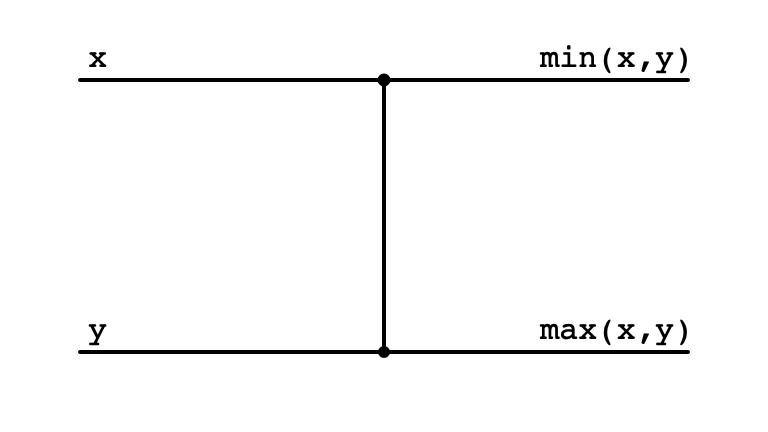
Comparator Swap
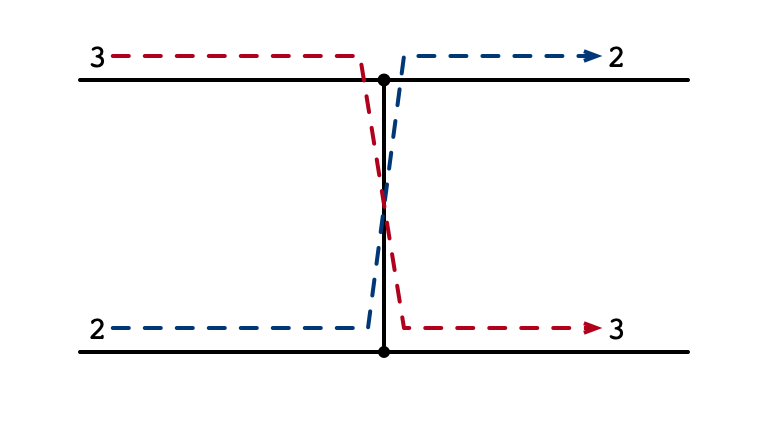
Comparator No Swap
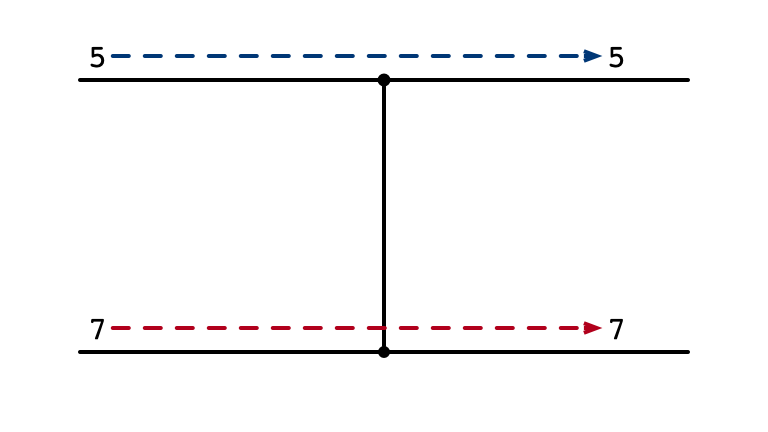
Sorting Array of Two Elements
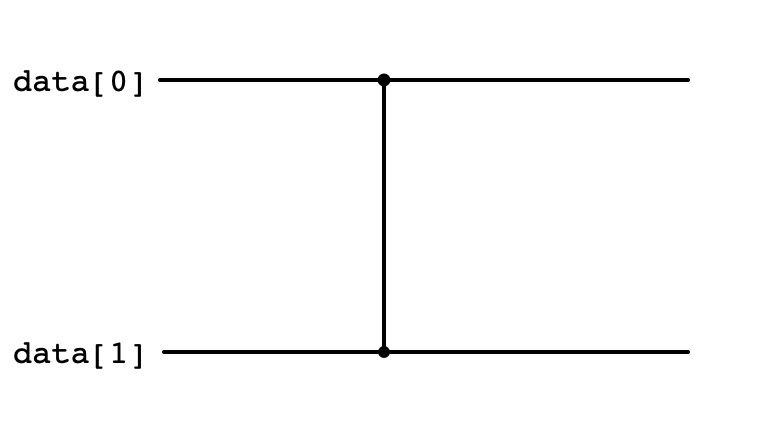
Insertion Sort
for (int i = 1; i < data.length; ++i) {
for (int j = i; j > 0; --j) {
if (data[j-1] > data[j]) {swap(data, j-1, j)}}}
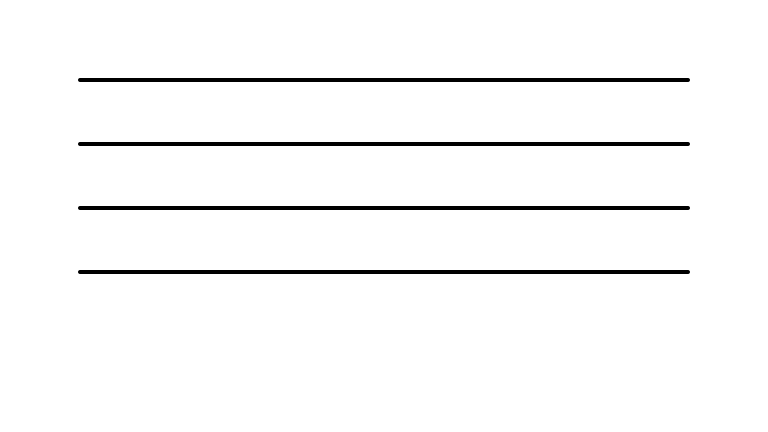
Insertion Sort: i = 1
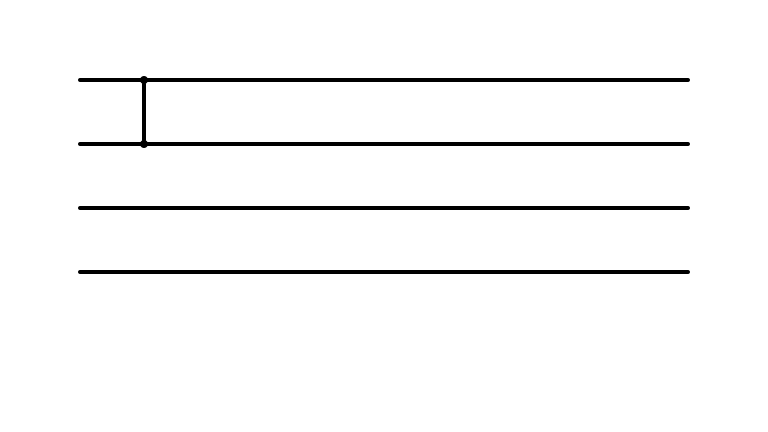
Insertion Sort: i = 2
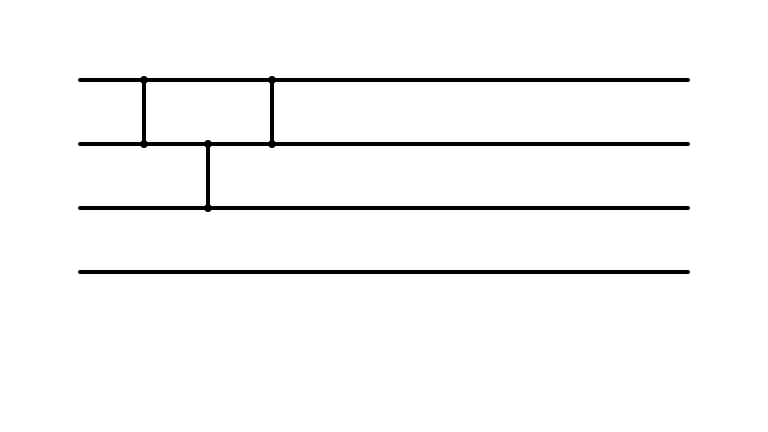
Insertion Sort: i = 3
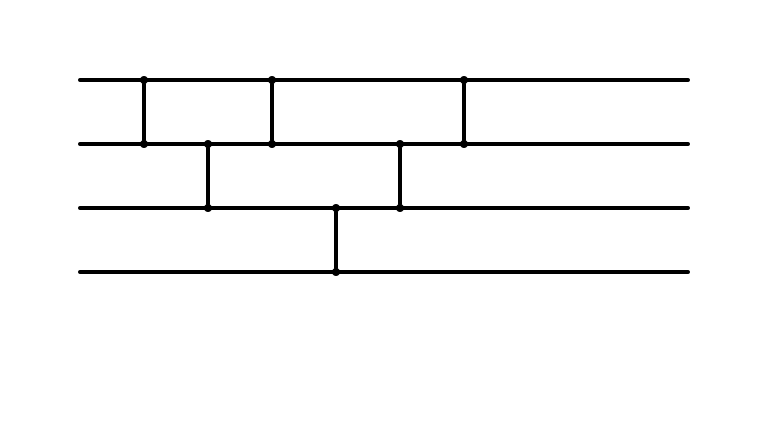
Which Operations can be Parallelized?

Parallelism
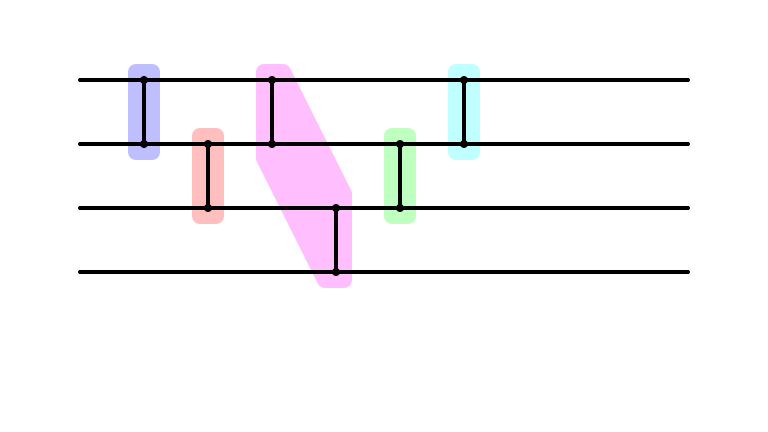
Cleaner Parallel Representation
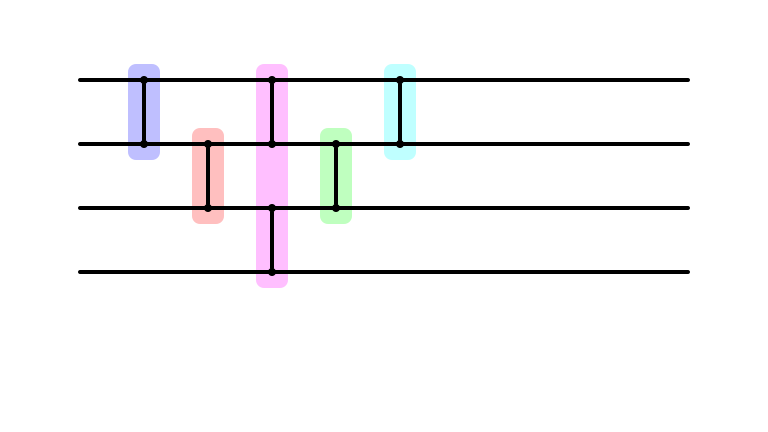
Depth
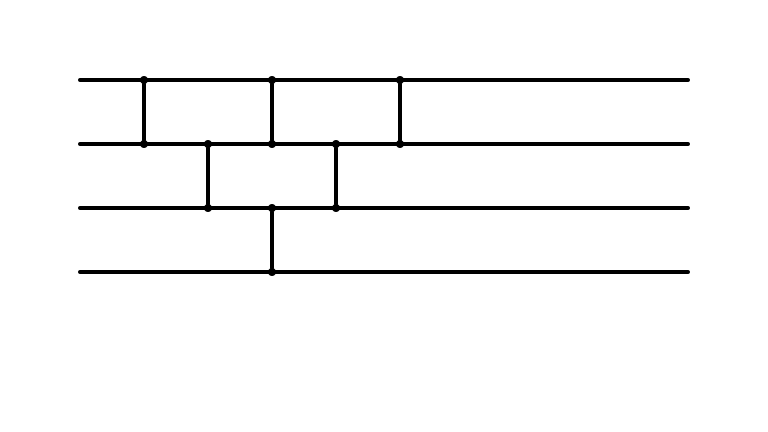
Insertion Sort: Larger Instance
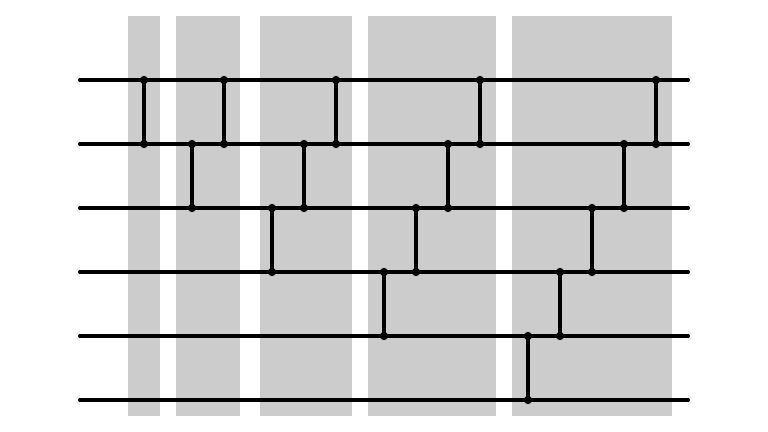
Done In Parallel?

Done In Parallel!
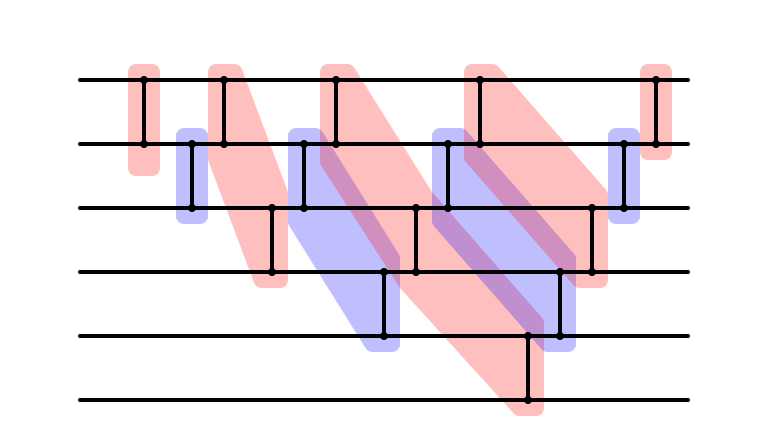
Cleaned Up
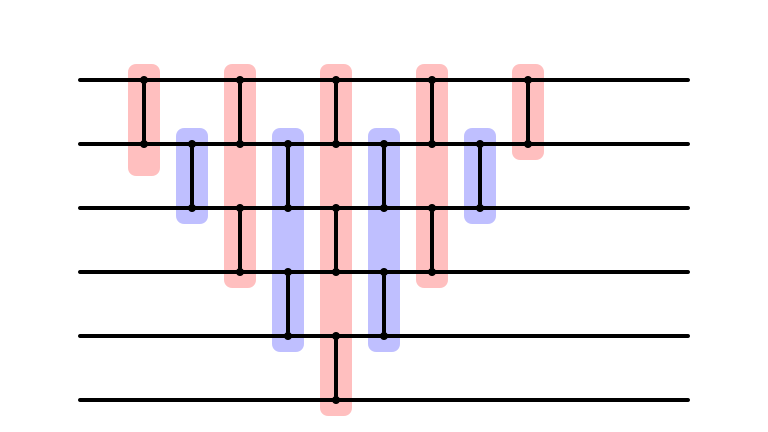
Parallel Depth?
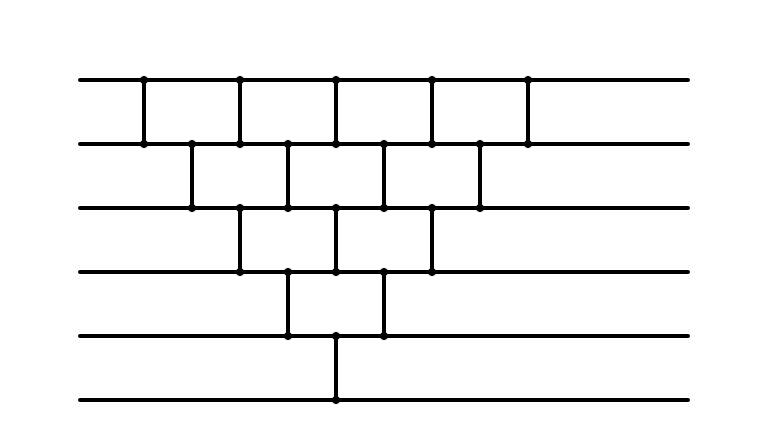
Bubble Sort
Consider:
for (int m = data.length - 1; m > 0; --m) {
for (int i = 0; i < m; ++i) {
if (data[i] > data[i+1]) {
swap(data, i, i+1)
}
}
}
Can we make a sorting network corresponding to bubble sort?
Bubble Sort: m = 6
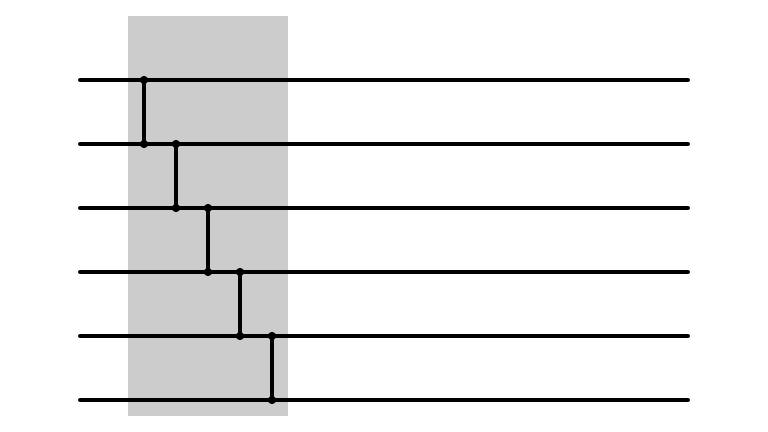
Bubble Sort: m = 5
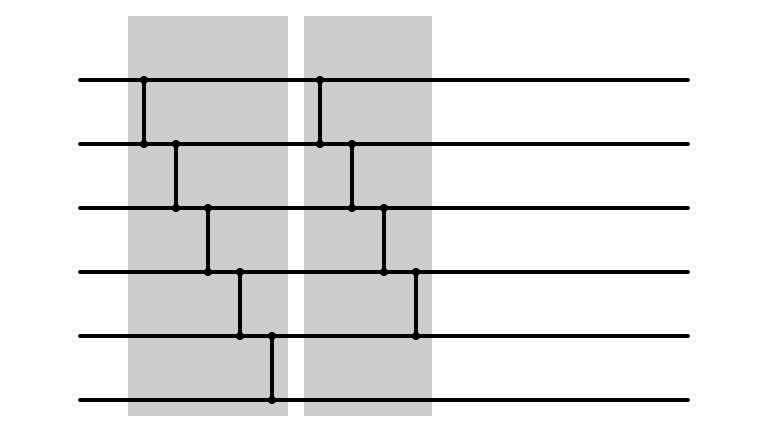
Bubble Sort: m = 4
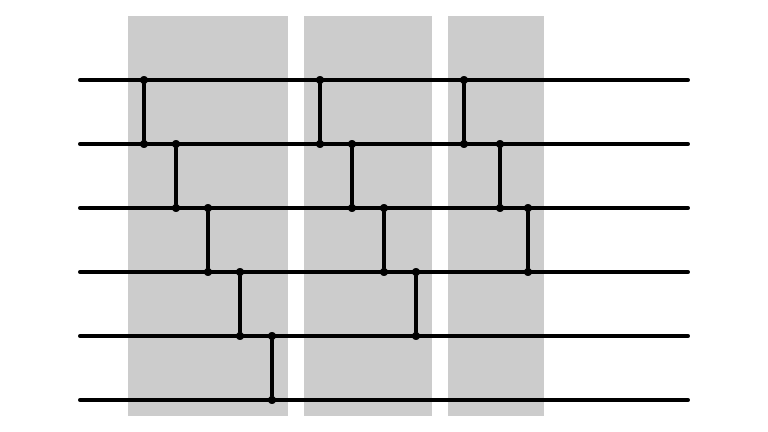
Bubble Sort: m = 3
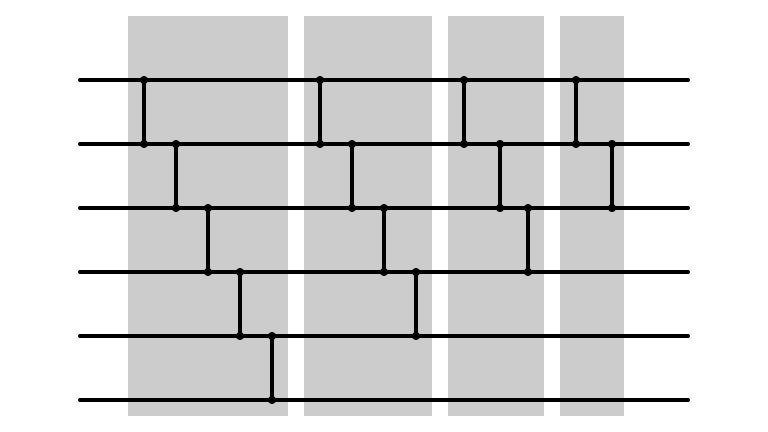
Bubble Sort: m = 2
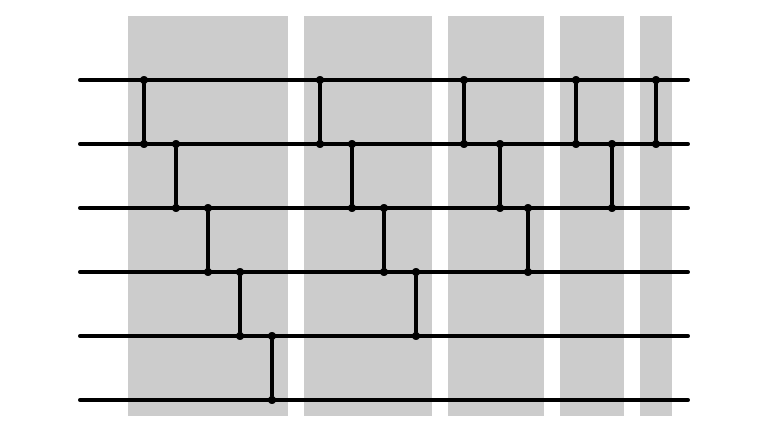
Bubble Sort Network
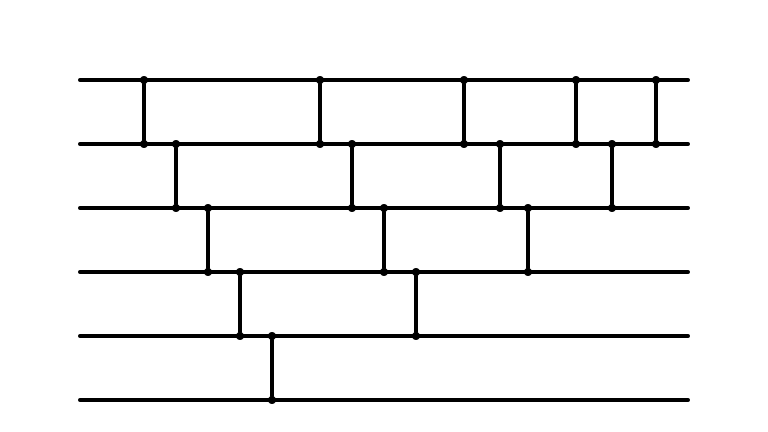
Bubble Sort Parallelized?

Does it Look Familiar?
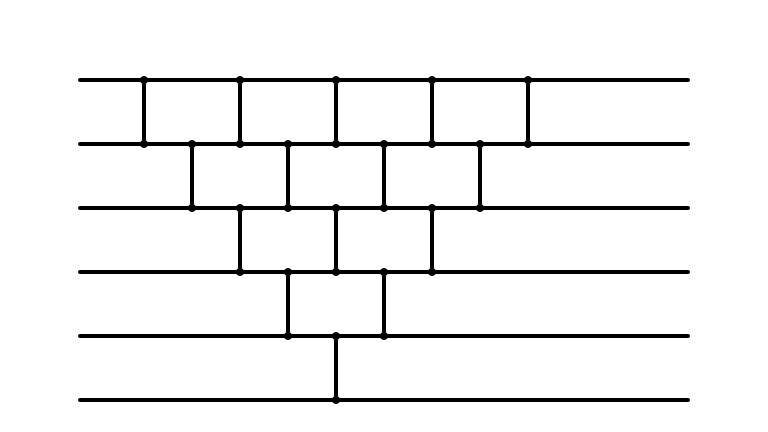
Huh
- Insertion sort and bubble sort perform precisely same operations
- only differ in the order in which comparisons are made
-
When fully parallelized, both are same sorting network
- Parallel versions are reasonably efficient
- depth $2 (n - 1) - 1 = 2 n - 3$
Activity
Make a more efficient sorting network for 4 elements
Sorting Network for 4 Elements?

Sorting Vectors
How could we use this sorting network to sort Vectors with 4 lanes?
A new tool: VectorShuffle
-
VectorShuffle<Float> vsstores an array of indices- e.g.,
vsstores[1, 0, 3, 2]
- e.g.,
- If
vecisFloatVector,vec.rearrange(vs)- e.g.,
vecstores[5, 4, 9, 7]
- e.g.,
Question. What is the result of vec.rearrange(vs)?
Implementation
How to implement the following parallel comparitor operations?
Example, In Pictures
-
vec = [7, 4, 5, 6],vs = [1, 0, 3, 2]
Example, In Code
Original vector vec, shuffle vs, mask mask is true for all lanes corresponding to min comparator
var swapped = vec.rearrange(vs);
vec = vec.blend(vec.min(swapped, mask)
.blend(vec.max(swapped, mask.not());
Optimal Network of Size 8

Testing It!
-
sorting-networks.zipimplements an optimal sorting network of size 8 - compares performance of sorting 1M blocks of size 8
- vector sorting network vs insertion sort
Next Week
More shared data structures: linked lists!